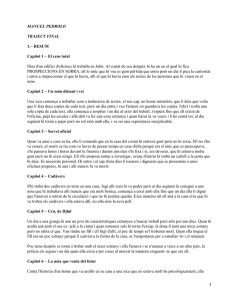

This fantastic film tradition is still alive today with Catalan directors such as Jaume Balagueró (1968- ) and José Antonio Bayona (1975- ). Together with the playwright Adrià Gual (1872-1943), de Chomón started the local Catalan fantastic film tradition with titles such as Magatzem d'invents ( 1905) and Física diabòlica ( 1911), comprising together only some of his work for the Barcelona branch of Pathé Films which he himself founded (de Chomón was also the local delegate of Georges Méliès's Star Films). Early twentieth-century Catalan sf is also influenced by the work of Catalonia's pioneer filmmaker, Segundo de Chomón (whom see). Hyde ( 1934) plus best-selling novels by Jules Verne and other French pioneers. The list of sf works translated into Catalan in the first third of the twentieth century (we give here the translation dates) include Camille Flammarion's Urània ( 1903), H G Wells's L'home que no es veu ( 1908), a selection of short fiction by Nathaniel Hawthorne (coll 1908), Karel Čapek's play RUR ( 1928), H Rider Haggard's Ella ( 1931) and Robert Louis Stevenson's novella El cas misteriós del Dr. Sf grew in Catalan under the influence of translation, which mixed novelties with the Victorian classics. Also very popular were some stage plays influenced by Jules Verne, such as De la Terra al Sol ( 1879) by Narcís Campmany and Joan Molas Quinze dies a la Lluna ( 1890) by C Gumà and L'any 13.000 ( 1893) by Miquel Figuerola Aldofreu. The first translation of Edgar Allan Poe and Bret Harte, Noveletas escullidas de Edgart Poe y Bret Harte Poe and Bret Harte"] (coll 1879 chap), included "L'home girafa", "Lo gat negre" and the short essay "Génessis d'un poema. Some nineteenth-century highlights are the short stories "La darrera paraula de la ciència" (1875), a Parody of Mary Shelley's Frankenstein by Joan Sardà Lloret "El moviment continu" (1878) by Antoni Careta Vidal, a satire of the search for the perpetual motion machine and "El radiòmetre" (1880) by Joaquim Bartrina and Narcís Oller, about the dangers of transgressing certain scientific principles. Science fiction entered the domain of the Catalan language in the last quarter of the 19th century.


There is a certainly very solid literary tradition in Catalan, which includes a long list of sf works – among them an indispensable masterpiece, Manuel de Pedrolo's Mecanoscrit del segon origen ( 1974).

Most Catalan speakers are bilingual, with Catalan being used as a first language by fewer than half of them. Catalan is also the official language of Andorra, the small country set in the middle of the Pyrenees. Catalan is not just the language of Catalonia, but a language shared with other areas of Spain, France, and even Italy.


 0 kommentar(er)
0 kommentar(er)
